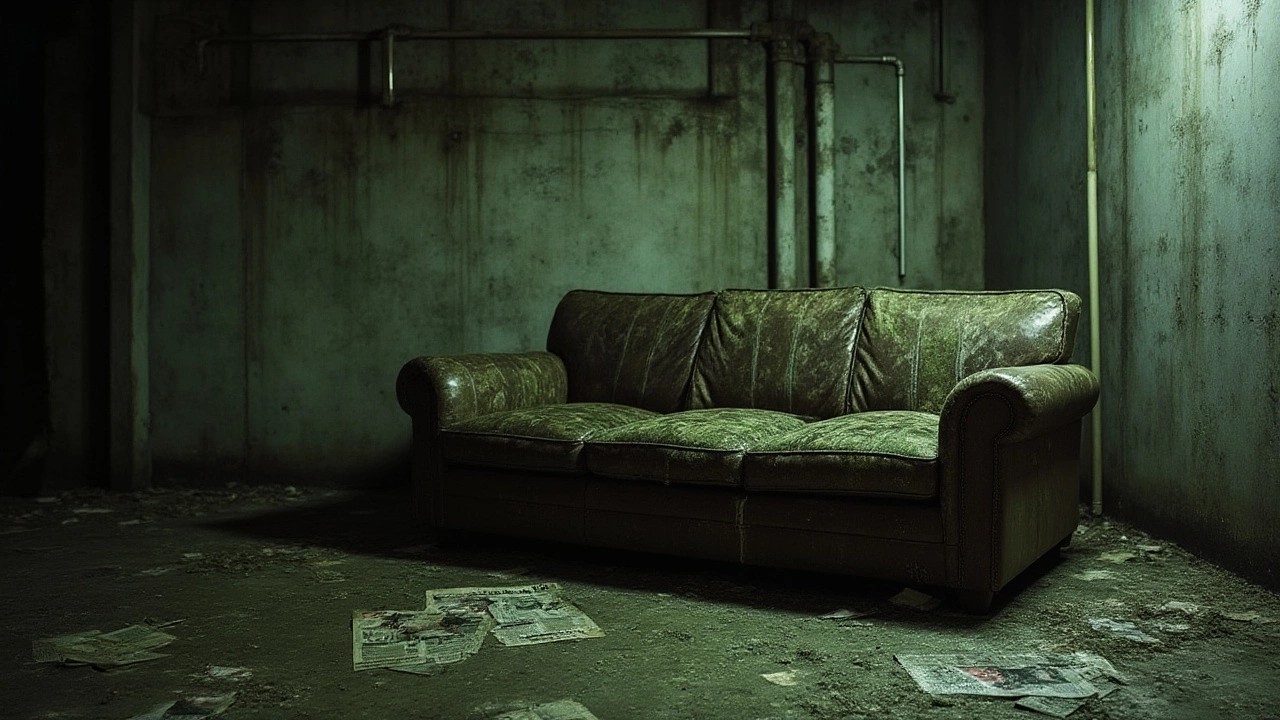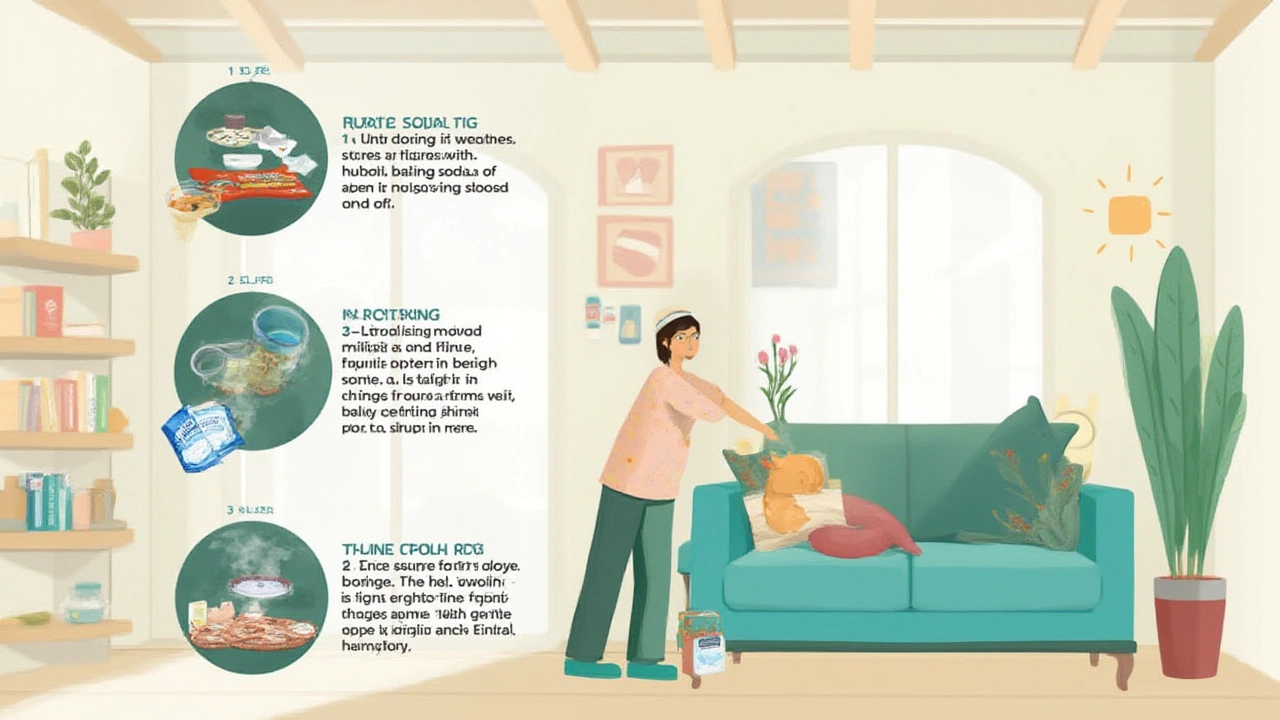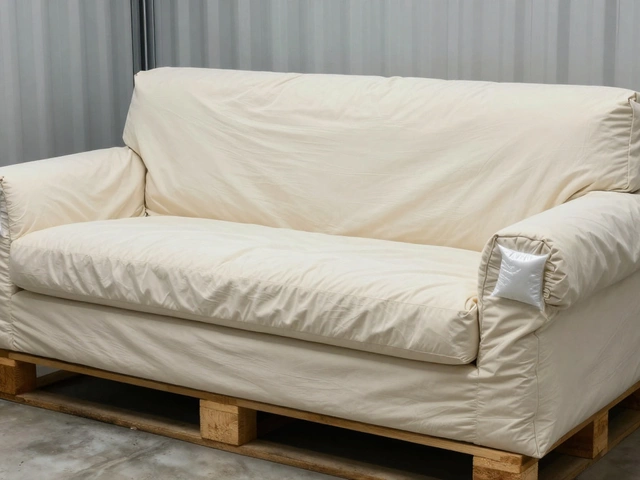That feeling when you open a storage unit and the smell hits you—damp, musty, like an old basement that hasn’t seen sunlight for years. If you’re unlucky, your couch is at the heart of it. Moldy sofas aren’t just gross—they’re a health risk and can be a pain (and expensive) to clean or replace. The real kicker? Mold loves your couch, and storage units give it the perfect playground. Most people throw a couch into storage just worrying about scratches. Mold? It's often a nasty surprise months later. But why and how is mold targeting your furniture? How do you keep your cozy sofa from turning into a science experiment? Let’s peel back the cushions and figure it out.
Why Are Couches Prone to Mold in Storage?
Think about it: couches are like giant sponges. Underneath the upholstery, you’ve got foam, cotton batting, wood, and sometimes even natural fibers like linen or wool. Every one of those materials grabs onto moisture and holds it tight. Storage facilities vary wildly—some are climate-controlled, fancy and dry, but many are not. When a storage unit gets hot or cold, condensation sneaks in. That means even a totally dry couch can draw in humidity from the air or from concrete floors, turning the inside of your sofa into a mold magnet.
Mold spores are everywhere, and they don’t care if your couch is a family hand-me-down or brand-new. All mold needs is something to eat (like wood or fabric), a bit of moisture, and the right temperature (between 77°F and 86°F, if you want the facts). Storage facilities and basements often sit in that temperature sweet spot for long chunks of the year. If your couch went into storage even slightly damp, or the air gets humid, it’s almost irresistible to mold colonies.
Even leather couches can be at risk. While you might think leather is a safe bet, it absorbs moisture too. Once it gets damp, you can start seeing fuzzy green and white patches that take ages to scrub out completely. Add in a dark, closed-up environment, and mold spores start multiplying fast—sometimes in just 24 to 48 hours if the conditions are ideal. No one wants to be the person who pulls out their living room centerpiece only to find it splotchy, sticky, and smelly.
Here’s a wild little fact: NASA once studied mold growth and found that certain spores can even survive radiation and the vacuum of space. So you bet they can thrive inside a rental storage unit in Ohio or New Jersey. The bottom line? Mold is stubborn, resourceful, and ready to party as soon as there’s a hint of water.
Common Mistakes That Lead to Moldy Couches
So many people assume a little plastic wrap is enough. Wrong move. Wrapping a couch in plastic traps air and moisture inside, especially if it was humid—or if you rushed and didn’t let it air out before packing. You basically create a mini greenhouse for mold. Another mistake is placing the couch directly on concrete or bare floors. Concrete “sweats”—it can pull up moisture from the ground, especially during weather swings. So that little space between couch and floor turns into a damp zone.
A lot of folks forget about ventilation. Sealing up a storage unit tight makes sense… if you want to keep out thieves or dust. But it also keeps humidity in, giving mold everything it loves. People often overlook cleaning, too. Leaving crumbs, pet hair, or even spills on a couch before storage gives mold more to munch on. Food stains especially can speed up mold growth, as can pet accidents or drink spills.
Here’s a mistake that’s common: ignoring outside weather. Humidity spikes in late summer or during rainy seasons, which means that even well-stored couches are vulnerable if local air gets sticky. Not all facilities are equal—older or poorly maintained ones are much more prone to flooding or leaks, which can soak your furniture overnight without you knowing.
If you’re using a storage unit that isn’t climate-controlled, you’re already rolling the dice. But even those units can have problems, especially if they’re opened and closed a lot or if the door isn’t sealed well. Little things add up—like using non-breathable covers, packing other damp items around your couch, or not elevating it off the ground. Small oversights can make a huge difference months down the line.

How to Properly Prepare Your Couch for Storage
Saving your sofa from a moldy fate takes a little planning. Start with a deep clean—vacuum out every crumb, pull off cushions, and use a fabric cleaner or mild soap to handle stains or spills. For leather, use a specialist cleaner and make sure it dries completely. The aim here is to remove anything that could turn into mildew food while making sure there’s no hidden moisture trapped inside.
Next, let the couch dry out completely. If possible, give it a good 24–48 hours in a dry, well-ventilated room or outside if the weather’s low in humidity. Airflow is your best friend. If you’re dealing with a couch that came from a basement or a damp house, consider using a dehumidifier first. Don’t be tempted to skip this step—hidden moisture is enemy number one.
Skip the plastic wrap. Go for furniture covers made with breathable material—think woven cotton or canvas. These covers keep dust off but let air move so moisture doesn’t get trapped. You can pick up these covers at most moving supply shops, and they're affordable insurance.
Before moving the couch into storage, place a pallet or set of wooden slats under it so it doesn’t sit directly on the floor. Even a few bricks or sturdy boxes will do. Anything that lifts the couch up helps air get under the frame and keeps ground moisture away. If you’re serious about protecting your couch, throw in a moisture absorber like DampRid or some silica gel packs under and around the cushions. These cheap products pull vapor out of the air and keep things dry.
If your storage unit isn’t climate-controlled, you can put a small battery-operated fan inside to keep air moving (if allowed), or visit every few weeks to open up and “air out” the unit, especially during rainy seasons. Little extra effort upfront saves a huge hassle later on.
Spotting the Early Signs of Mold and What to Do About It
You won’t always see big splotchy patches at first. Sometimes, the first giveaway is a smell—think musty, old gym clothes, or wet cardboard. If you catch a whiff, check under the cushions, along seams, and underneath the sofa itself. Mold often starts at hidden spots where airflow is worst and dampness settles in. For sectional couches, take them apart and inspect connecting pieces and joints (the wood frame is a favorite target).
Visually, watch for dark green, white, or even black spots. Sometimes, you’ll notice a fine powdery coating—don’t brush it off with your hand, or you’ll spread spores. Early on, the couch might just look dull, with faded patches. That’s mold setting in under the top layer. Leather couches may develop white fuzzy patches—often mistaken for dust but actually a type of mold called Penicillium.
If you catch mold early, vacuum the spot with a HEPA filter, then wipe down the area with a mix of water and rubbing alcohol (60/40 ratio works well). For fabric, mix two tablespoons of baking soda into a quart of water and gently dab the area—don’t drench it, or you’ll feed the mold. For really tough cases, try an enzymatic cleaner or contact a professional. Mold on deep couch padding is almost impossible to remove at home and can be a health hazard, especially for pets, kids, or anyone with allergies.
Never ignore early signs! Mold gets worse quickly and can even eat through foam and wood. Plus, once spores settle into a storage unit, they hitch a ride on other furniture, boxes, or anything else you store. Act right away, and you can often save your sofa and keep the problem from spreading.

Tips to Prevent Moldy Couches in Storage Long-Term
Think of mold prevention as a checklist. First, always choose a climate-controlled storage unit if your budget covers it. These units keep temperature and humidity stable, cutting down the risk almost entirely. If climate control isn’t an option, go for a unit on high ground (avoid ground-level units in flood-prone areas), and steer clear of any facility with visible leaks or water stains in hallways or corners.
Visit your storage every so often, especially after storms or in humid months. Even just opening the door for five minutes can help let humidity escape. During your visits, feel around the couch for dampness—especially underneath or along the back, where moisture may collect unseen.
Invest in moisture absorbers or silica gel. Place them directly under and around your couch, and change them out every few months. If you’re storing other furniture or boxes, don’t stack them too tightly around the sofa—airflow matters. Try storing soft goods like mattresses or armchairs at least six inches from your couch and the walls.
Don't store items you know are already damp, even if you think they’ll “dry out later.” That’s like throwing a welcome party for mold. After moving your couch in, keep it uncovered for a few hours (unless it’s at risk of dust or dirt) to let any sneaky sweat evaporate.
If you’re storing long-term, consider buying a cheap humidity sensor. These little gadgets let you check if the air inside is getting too damp (aim for less than 60% humidity). If readings creep up, add more moisture absorbers or ask the facility if they offer upgrades to climate-controlled options.
Lastly—or maybe most practically—never ignore your nose. Smell something musty? Act fast. Early intervention and a few smart habits could save you hundreds (or thousands) in cleaning or replacement costs, and you’ll never have to endure that sickening, moldy couch surprise again.




